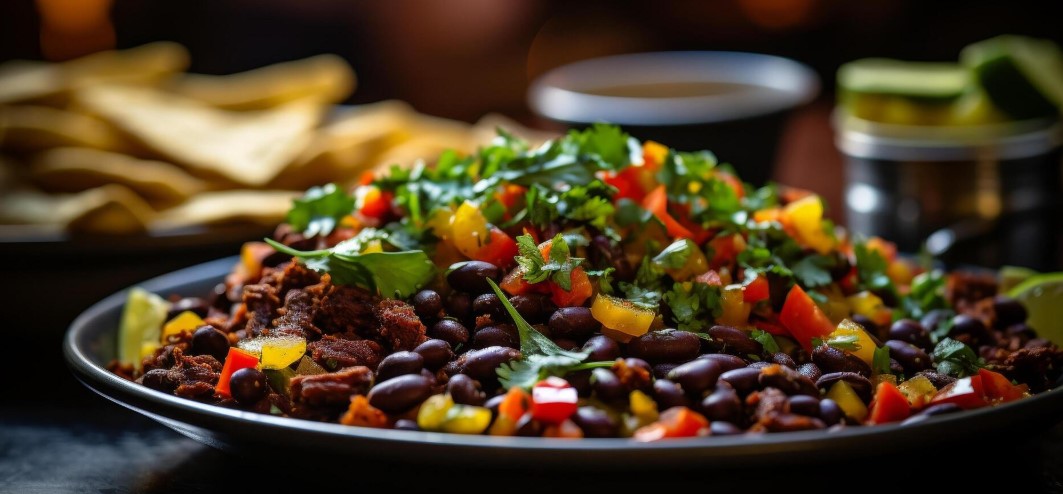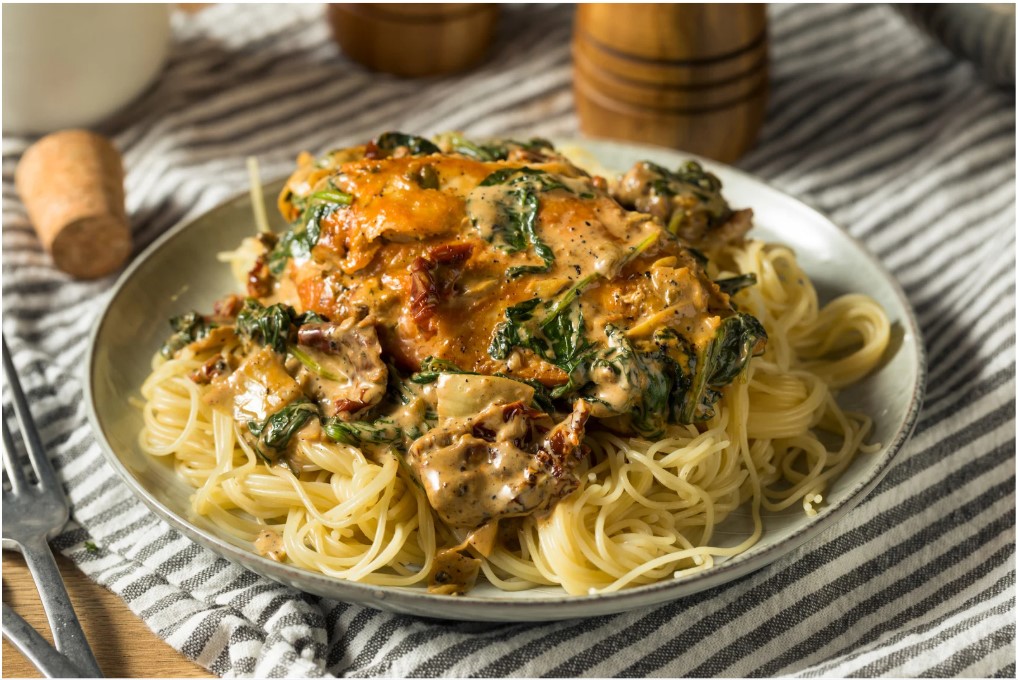Key Steps to Protect Your Family During a Food Crisis & Essential Items to Have
With today’s unpredictable political climate, economic shifts, and supply chain disruptions, it’s not a bad idea to have a plan. After all, who wants to be the person fighting over the last can of beans at the grocery store? A little preparation now can save a lot of stress later. This guide will walk you through key steps to prepare for food shortages, featuring real-life scenarios, a dash of humor, and recommended survival products to enhance your emergency plan.
In times of uncertainty, ensuring your family has enough food and essential supplies can make all the difference. Preparation is key to facing a natural disaster, economic downturn, or global supply chain issues. This guide will walk you through practical steps to protect your family during a food crisis and must-have survival items to keep on hand.
1. Step 1: Build a Long-Term Food Supply
Scenario: A family was stuck at home for over a week during a severe winter storm. Grocery stores were emptied, and deliveries were halted. Thankfully, they had stocked up on essential non-perishable foods, ensuring they had meals without stress.
The first step in food crisis preparedness is building a reliable food supply. You don’t have to buy everything at once—start small and work toward a 3-month stockpile of essentials.
🛒 What to Stock Up On:
✅ Non-Perishable Foods:
- Canned meats (tuna, chicken, salmon)
- Canned vegetables & fruits
- Dry beans, lentils, and rice
- Pasta, oats, and grains
- Peanut butter and other protein sources
✅ High-Calorie Survival Foods:
- Protein bars and meal replacement shakes
- Powdered milk and dehydrated foods
- Freeze-dried meals with a long shelf life
✅ Cooking Essentials:
- Cooking oil, sugar, salt, and spices
- Shelf-stable dairy alternatives
- Baking ingredients (flour, baking powder, yeast)
🔹 💡 Pro Tip: Rotate your stock every 6-12 months to keep it fresh. Label items with purchase dates and consume older items first.
Recommended Product:

The Augason Farms Lunch & Dinner Emergency Food Supply is essential for emergency preparedness. It’s crucial for survival planning and long-term food storage. This food bucket contains 92 servings of delicious, easy-to-make meals, including pasta, soups, rice dishes, and even chocolate pudding.
Simply add water, and you’re ready to eat! Keep your household prepared with Augason Farms’ high-quality emergency food supply.
2. Secure a Reliable Water Supply
Scenario: A major water main break left an entire neighborhood without clean drinking water for several days. Those without stored water had to rely on uncertain sources.
Preparation Tip: Keep at least one gallon of water per person per day for a minimum of two weeks. Invest in water purification tablets or filters for backup. (Because no one wants to test their immune system with sketchy water.)
Water is more critical than food in an emergency. The average person needs at least 1 gallon of water per day for drinking and hygiene.
💧 How to Store Water:
- Store bottled water in a cool, dark place.
- Use large water containers (like 5-gallon jugs) for long-term storage.
- Consider a rainwater collection system if allowed in your area.
🛠️ Water Purification Methods:
- Boiling water for 5 minutes kills bacteria and viruses.
- Use water purification tablets or portable filters like the LifeStraw.
- Invest in a gravity-fed water filter like the Berkey Water System for long-term use.
🔹 💡 Pro Tip: If you’re storing tap water, add a few drops of unscented bleach per gallon to prevent bacteria growth.
Recommended Product: – A portable water filter that makes natural water sources safe for drinking. ** Link Below! **

The LifeStraw Personal Water Filter is a must-have for emergency preparedness, survival kits, hiking, and outdoor adventures. This portable, lightweight water filter removes 99.9999% of bacteria, parasites, and microplastics, ensuring access to clean drinking water in any situation. Designed for convenience, it requires no batteries or replacement parts and filters up to 1,000 gallons (4,000 liters) of contaminated water. Ideal for disaster preparedness, emergency kits, and off-grid travel, LifeStraw is trusted worldwide for safe, drinkable water wherever you go.
3. Plan Alternative Cooking Methods

Scenario: After a hurricane knocked out power for over a week, a family struggled to cook meals. Fortunately, a neighbor shared their portable camp stove, allowing them to prepare food.
Preparation Tip: Have a backup cooking method such as a propane camping stove, solar oven, or fire pit. Keep extra fuel or alternative energy sources on hand. (Cold beans straight from the can will get old fast.)
If the power goes out, you’ll need a way to cook food and stay warm.
🔥 Alternative Cooking Methods:
✅ Portable camping stove (uses propane or butane)
✅ Solar oven (uses sunlight to cook food)
✅ Fire pit with a grill (for outdoor cooking)
✅ Rocket stove (high-efficiency wood-burning stove)
🔦 Backup Power Sources:
- Solar-powered lanterns and flashlights
- Hand-crank emergency radios with USB chargers
- Portable power banks or solar chargers for phones
🔹 💡 Pro Tip: Stock up on extra propane tanks and batteries before an emergency hits.
Recommended Product: – A compact and efficient solution for cooking without electricity.

The Grill Boss Outdoor Portable Stove is a must-have for camping, emergency preparedness, and survival cooking. Designed to work with both propane and butane fuel, this compact yet powerful stove delivers 12,000 BTU heat output. This portable gas stove is an essential addition to any prepper or outdoor enthusiast’s gear.
4. Establish a Secure Food Storage System

Scenario: A household that invested in bulk grains made the mistake of storing them in their original packaging. Months later, they discovered pests had contaminated a large portion of their supply.
Preparation Tip: Use airtight, pest-resistant containers for food storage. Consider vacuum-sealing dry goods and adding oxygen absorbents to extend shelf life. (Because you’re storing food for yourself, not a colony of pantry bugs.)
A food crisis doesn’t mean sacrificing nutrition. Make sure your emergency food plan includes essential nutrients to keep your family healthy.
🍎 Nutritional Must-Haves:
✅ Vitamin C & Multivitamins – Prevent deficiencies when fresh produce is scarce.
✅ Protein Powder – Adds essential nutrients to meals.
✅ Dehydrated Fruits & Vegetables – Retain nutrients and last longer than fresh produce.
🔹 💡 Pro Tip: Get your family accustomed to eating emergency foods before a crisis so they’re not surprised by new flavors and textures.
Recommended Product: – Durable, airtight, and ideal for preserving food long-term.

The OXO Good Grips 5-Piece POP Container Set is the perfect solution for keeping dry foods fresh. It also makes your pantry clutter-free.
Now dishwasher-safe, these durable containers make meal prep and long-term food storage effortless. Whether you’re looking to extend the shelf life of pantry staples, you will find this solution helpful. You can also create a sleek, organized kitchen. This versatile food storage solution is a must-have for home chefs. It is also essential for preppers alike.
5. Grow Your Own Food for Sustainability
Scenario: During an economic downturn, a family found fresh produce to be expensive and difficult to find. Their small home garden became their primary source of vegetables.
Preparation Tip: Start a vegetable garden, even in small spaces. Learn about sprouting and hydroponics for year-round fresh food. (Your future self will thank you when store-bought lettuce costs as much as a steak.)
One of the most effective ways to secure food for your family during a crisis is growing your own food. Having a home garden reduces dependence on grocery stores, ensures fresh produce, and provides a renewable food source. Even if you have limited space, you can still grow nutrient-rich foods at home.
🌱 What to Grow for Maximum Yield & Nutrition
✅ Fast-Growing Vegetables:
- Leafy greens (lettuce, spinach, kale) – Ready to harvest in just a few weeks.
- Radishes & carrots – Quick-growing root vegetables packed with nutrients.
- Tomatoes & peppers – High in vitamins and easy to grow in containers.
✅ High-Calorie Survival Crops:
- Potatoes & sweet potatoes – Provide energy-dense food with long shelf life.
- Beans & lentils – Excellent protein sources that store well when dried.
- Corn & squash – Traditional survival crops that yield large harvests.
✅ Fruits That Keep Producing:
- Strawberries & raspberries – Low maintenance and produce for multiple seasons.
- Apple & pear trees – Once mature, they provide food for years.
- Citrus trees (lemon, orange, lime) – Can be grown indoors in colder climates.
Recommended Product: – A space-efficient way to grow fresh herbs and vegetables indoors.

The LetPot LPH-SE Hydroponics Growing System is a 12-pod smart herb garden kit designed for effortless indoor gardening. Featuring high-efficiency LED grow lights and Wi-Fi app control, this self-sustaining hydroponic system allows you to grow fresh herbs, vegetables, and salad greens all year round.
6. Educate Your Household on Food Rationing
Scenario: Faced with a food shortage, a family needed to stretch their supplies for weeks. Because they had previously practiced portion control and rationing techniques, they successfully managed their meals.
Preparation Tip: Teach your household about portion control, meal planning, and food preservation methods. A rationing strategy prevents waste and ensures supplies last longer. (Yes, this means no midnight snack binges on the emergency chocolate stash.)
Your food supply is only as good as your preparedness plan. Make sure your family knows what to do in case of:
✔ Power outages – Where is the flashlight? How do you cook without power?
✔ Evacuations – Where will you go? What essentials do you grab?
✔ Food shortages – What alternative foods can you eat?
🔹 💡 Pro Tip: Have a monthly family meeting to review emergency plans and check supplies.
Recommended Product: [Food Portioning Scale] – Helps measure portions accurately to make supplies last.

The KitchenAid KQ909 Dual Platform Digital Kitchen Scale is a versatile kitchen tool. It is precise and designed for accurate measuring of ingredients. Featuring two stainless steel platforms, this scale allows for simultaneous measurements of large and small quantities, making it perfect for baking, cooking, meal prep, and portion control. The backlit digital display provides clear and easy-to-read measurements in ounces, grams, pounds, and milliliters.
Final Thoughts
Preparing for a food shortage isn’t about fear—it’s about being proactive. Whether it’s supply chain issues, natural disasters, or just the wild unpredictability of today’s world, a little planning goes a long way. Start preparing today to gain peace of mind and control over your food security.
Stay prepared, stay safe, and—if nothing else—stay ahead of the rush on canned goods!
Are you already prepping? Share your best survival tips in the comments! 👇👇







